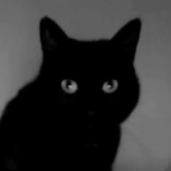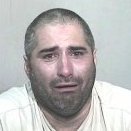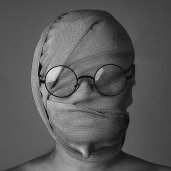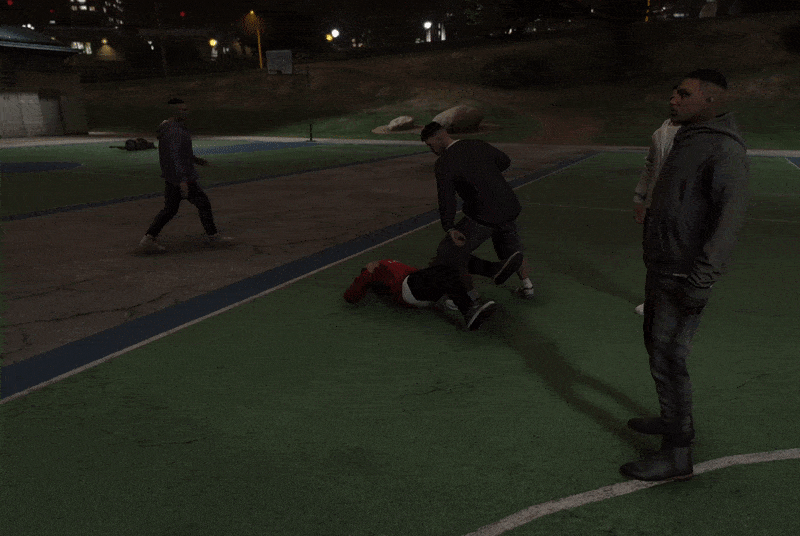Search the Community
Showing results for tags 'little seoul'.
-
NYLA ( This Thread will follow the development of Nyla Carter )
- 24 replies
-
- dyke
- naughtnasty
-
(and 2 more)
Tagged with:
-
I am selling my 1 bedroom apartment on the ground floor of the Sunshine complex in Little Seoul. The area is always lively with plenty of locals to get to know and plenty of shops for all your needs as well as the well renown Ji-OK night club. I will be selling to somebody already in the area or looking to set down some routes in the area. (( I will mainly looking to sell to someone that is going to use the apartment for their character, not to flip it or rent it out to another party. )) As you can see by the pictures above, the apartment has a good standard of interior design and is ready to be lived in. The buyout for the property is set at $376,360 If the correct suitor comes available the property could be sold for less than the buyout price. Starting Bid: $166,360 The property will be listed for a total of five (5) days and then the potential new owner will be contacted via E-Mail ((Forum PM)), so please leave your e-mail address on any bids made. (( )) (( I reserve the right to refuse a potential player offering the buyout if I find a person more suitable for the area. Preference is someone that roleplays in the area and will continue to do so. House flippers, landlords need to look elsewhere. )) Comments Enabled. Bidding Enabled. Bids below the starting bid, automatically cancelled.
- 7 replies
-
- little seoul
- community
-
(and 1 more)
Tagged with:
-
- 9 replies
-
- little seoul
- streetwear
-
(and 3 more)
Tagged with:
-
The Wakka Gang of Koreatown The New World Consisting exclusively of Australian Aboriginal immigrants, this Los Santos street gang was formed in 2005 under leadership of James Yindi a/k/a Chief as referred to by his fellow gang members. The small aboriginal community in Little Seoul was target of much racism from their Asian counterparts and the youth felt forced to form a gang in defense of their relatives who were less combative. They began to fight the Chinese and Korean youths around them and quickly two members of the Wakka Gang got stabbed, one of which later died at the hospital. Which incited more violence as the Wakka's as they are referred to began to commit a string of robberies both on innocent Asians in the community and their family stores to fund the guns they needed to fight back against the Asian gangs that dominated Koreatown. In the early 10's a bloody war broke out between a local Chinese gang under the Triads and the Wakka's, one which saw them lose two brothers, forcing the leader, James Yindi to return to Australia to recruit more abled bodies to help his brethren in the west. The Spirits Upon arrival in Australia, Chief was met by his cousin whom escorted him to the deep desert where the Wakka Wakka Tribe thrive in Queensland. Here he was met by the Chieftain of the Wakka Wakka Tribe who first scolded him and lashed him for his behavior overseas, but then, after much convincing, forced twenty young men, just turned 18, to travel back to Los Santos with him, if, and only if, the spirit, Jesse, of the infamous Fire Clan, would approve of it. Chief agreed, and was astonished by the amount of men he was delegated by the Chieftain, exciting him so much that he sprinted all the way to the other end of the desert to find the Fire Clan, where the great Jesse would bless him with his strength and approval. One Last Thing After receiving the blessing, he had one stop left to make before he could return to Los Santos. He had to meet his future supplier, face to face, and establish a connection. He had to go to the westcoast, to Perth, where a good friend from another gang known as 4020 Norphside Crew lived. He would meet him at the harbor, where they discussed the future and established the Wakka Gang's first alliance and contact. The Norphside Crew would from this day on supply them with all the drugs they needed, but mainly meth. Return of the Chief Upon returning to Little Seoul, Chief saw that it was good. It was a good day to destroy the Asian community. Twenty man strong, he marched back to their hood to meet the last 6 of his local gang members. Introductions were made, kisses were exchanged, and then they got to picking up bats from the gas station to run down the Asians that had haunted them for years on end and killed their brothers. They beat the living crap out of a large group of asians standing by the gas station and half the Wakka Gang went to prison. Which later would prove, not to be a bad development. Prison Is Not So Bad After All With the Chief now serving a lengthy sentence for attempted murder in prison along with a few of his brothers, they have joined forces with the Polynesian prison gang which forced them to make peace with the Asians on the outside due to their friendship on the inside. This set the peace in stone between the communities of aboriginals and asians in Little Seoul. But this only proved to strengthen both sides as they blossomed and grew sizably to become big trouble for the nearby Hispanic gangs. For those interested in roleplaying with us or asking questions, please join the discord server https://discord.gg/F2k6dHkqFb
- 30 replies
-
- 1
-

-
- little seoul
- aboriginals
-
(and 1 more)
Tagged with:
-
The Big Circle Gang trace their roots to the aftermath of the Cultural Revolution, when the mass student-led paramilitary Red Guards were purged by the People’s Liberation Army. Many of them were subsequently sent to the provincial capital Guangzhou for ‘re-education’ or imprisonment in Southern China. Those who managed to escape, however, “turned their military prowess to crime,” according to Canadian court records; many initially fleeing to Hong Kong, and later to Canada and the United States in the eighties - Vancouver and Los Santos being two very popular destinations for members of the fledging criminal organisation. Differing from more traditional Chinese criminal units in its structure, being composed of loosely organised cells spread across the overseas diaspora, some began to adopt their own names and identity. The Los Santos cell, overseen by boss Chau Siu-ho, came to be christened as the Triple Eight Group. He would oversee its gradual yet clandestine growth, primarily dealing in the counterfeit and drug trafficking industry - especially the importation of fentanyl produced in Mainland China. It would later flow into neighbouring Vespucci and beyond during the initial wave of what was to become a statewide opioid epidemic. Business continued under the nose of local law enforcement well into the early-to-mid 2000s, however, the rapid rise to power of Tse Chi Lop in Vancouver was to prove pivotal. Establishing an alliance crossing traditional triad lines - including members of the Sun Yee On, 14K, Bamboo Union and his own Canadian faction - while also maintaining anonymity and living comfortably between Hong Kong and Macau. The Triple Eight Group were elevated into the newly formed Sam Gor syndicate although remained in quasi-independence through the remainder of the decade. The fruit of this new partnership was the migration of several Hong Kong and Taiwan based criminals to the United States, two of whom being 14K members Wu Yau and David Wu Tse - both born in New York for citizenship reasons, but raised in Kowloon. Their work with the local Sam Gor, and later a Fujianese human trafficking ring, would see them relocated again to Los Santos to assist with the snakehead’s San Andreas branch during a conflict with Korean organised crime. While there, they would meet Kevin Heoi, a mainlander who left Fuzhou at sixteen and worked abroad in Hong Kong and later the United States. The three spent several years serving underneath Meng Wuying - who they would later attempt to murder during a conflict between Eurasian, Serbian and Italian-American criminal organisations, which Meng had brought the human trafficking ring into. The botched hit left Wuying in a coma with life-threatening injuries, and the plotters swiftly relocated out of Los Santos to plan their next moves in the ensuing civil war. Beforehand, the arrest of Tse Chi Lop was to send shockwaves throughout the Sam Gor Syndicate. Despite the organisation’s loose structure, they weren’t completely unscathed from eye of the law - A month after Chi Lop’s arrest in Amsterdam, Los Santos boss Siu-ho was detained in Brisbane. The resulting power struggle resulted in the flight or death of most of the group’s members, and the drying up of its fentanyl and wider smuggling operations. It would not be until the organisation was consolidated that the powers that be, further up the food chain, were to take an interest in Los Santos again. Following the conclusion of the Los Santos Mob War, the would-be plotters were approached with an offer to re-establish presence on the West Coast, where they were to be also accompanied by a Korean associate from Seoul, Ronald Ho. The organisation's plans to elevate themselves into the Sam Gor syndicate were cut short by the arrest of Heoi and Ho following law enforcement probes into drug trafficking; subsequently, in order to salvage what remained of its structure, Tse oversaw its reorganisation into Westside Asian Mafia. The new identity reflects the cell's shift towards more street-level and violent crime, while still maintaining elements of organised crime in its upper echelons and ties to drug trafficking organisations across the Golden Triangle. Members of the group are predominately male, of Southeast and East Asian descent, low-economic status and/or have prior affiliations with Asian street gangs. Insiders engage in a variety of criminal activities including murder, kidnapping, assault, theft and racketeering although the organisation's main source of money making is and remains the eight billion dollar drug trafficking network that pumps fentanyl, methaphetamine and oxycodone into Little Seoul and beyond. Limited affiliation with the Sam Gor syndicate is maintained through Westside Asian Mafia's leadership, and its associates who focus in more organised criminal activity. OOC INFORMATION This group aims to portray a realistic Asian drug trafficking organisation with a predominant focus on street presence. Recruitment is primarily aimed at poor and working class East and Southeast Asian characters who reside in the Little Seoul area; irrespective of generational status, nationality or citizenship. We prioritise character and group development and will be working our way up from the bottom; if you expect generic organised crime or gang roleplay, this isn’t the place for you. We reserve the right to character kill anyone who involves themselves with the organisation. Any queries can be directed to @beggar and @ziggy, who are popol vuh#9199 and ziggy#6335 respectively on Discord. You can also join our server: https://discord.gg/YkS4f3Hy5F
- 38 replies
-
- 28
-

-

-
- little seoul
- dto
-
(and 2 more)
Tagged with:
-
The thread will follow Derrick Munguia a/k/a Largo, a W/S Mara Salvatrucha gang member, and an active gang banger.
- 14 replies
-
- 1
-

-
- w/s mara salvatrucha
- ms13
- (and 9 more)
-
- 18 replies
-
- 6
-

-
- amy sung
- little seoul
-
(and 3 more)
Tagged with:
-
Michael Son Michael Son (born Son Min-chul; January 26, 2002) is an 18-year-old Korean-American orphaned teenager. He was aged-out of the American foster care system, resulting in his descent into poverty and consequent homelessness. Michael Son was left in the care of a foster home at the age of six after his mother was deported to South Korea following a case of migrant smuggling. Michael does not have any family, or any that he knows of at this point in time, living in Los Santos. He is commonly seen around the Little Seoul and Vespucci areas looking to make a living.
-
For Rent SK Properties 1324 Palomino Blvd - Floor 2, Room 1 $20,000 per Week Contact at [email protected] ((@nachorn)) - #12000 Entry Kitchen Living Room Office/Gym Walk-in Closet Bedroom Bathroom
-
- 12 replies
-
- 23
-

-
- k-town
- little seoul
-
(and 1 more)
Tagged with:
-
r.i.p young marero
- 3 replies
-
- 1
-

-
- little seoul
- marcus teixeira
-
(and 2 more)
Tagged with:
-
Username: Comment:
-
Two bedroom apartment on the second floor of Lindsay Circus complex in Little Seoul, directly opposite the gas station. Plenty of local amenities and a friendly community to be a part of. Market Price: $110,000 Asking Price: $110,00 Not accepting lower than asking price.
-
"If it's the last thing that I gotta do, if it's the last point that I gotta prove, to my fuckin squad I'ma keep it true and represent the gang till I'm restin in a tomb" - Young Dopey Left to right; Florencia Echegoyen, 2015 @ Decker Park before MS13 RICO indictment ~ Florencia Echegoyen, 2020 @ Lindsay Park after release from Bollingbroke State Pen BACKSTORY: Florencia Echegoyen a/k/a La Greñas was a W/S Mara Salvatrucha 13 gang member, originally born into a mid-end family in West Los Santos; a couple of them being affiliated to the W/S Mara Salvatrucha 13 themselves. Florencia Echegoyen was a good girl up until she was 14, when she was placed under the observacione role within W/S Mara Salvatrucha 13; meaning she was being observed for membership status. She became a chequeo at the age of 15, ironically being the same year that the Federal Bureau of Investigations and Los Santos Police Department RICO indicted countless W/S Mara Salvatrucha 13 affiliates, her being one of them. She was sent to a juvenile detention center where she was officially inducted as a member of the transnational criminal organization at 16 years old by other young affiliates, and was given a 13 second beatdown to get jumped into the gang; in private away from juvenile security. At the age of 15; Florencia Echegoyen and several other Mareras jumped a rival female gang member from Drifters 13, where it resulted in Florencia Echegoyen hanging the rival female with a rope; essentially lynching her. This is where Florencia Echegoyen's street name; La Greñas comes into play, since it translates to "Tangle", and the rope tangled multiple times during the lynching; Florencia Echegoyen's homegirls nicknamed her La Greñas. Once Florencia Echegoyen hit 18 years old, she was officially transferred to the women's facility of Bollingbroke State Penitentiary where she served a remaining 17 months before being released back into the general population. Once released back into the public, she spent roughly two years in the W/S Mara Salvatrucha doing countless things to keep ship afloat, until Gabriella "Feisty" Delgado was released after being made keyholder of MS in the state of San Andreas. Once "Feisty" Delgado became the acting keyholder, just before her reigns came to an end she gave Florencia the go ahead to walk away from the W/S Mara Salvatrucha. After walking away from MS13, Florencia got deeper into the underworld of Organized Crime instead of going legit. In her mind, getting away from MS13, and removing the tattoos; were only going to help her go far in the underworld. Due to being a woman in a man's world, her Mexican uncle from the Badiraguato region of Sinaloa helped line up a connection for her to get in touch with some people, and directed her to the most infamous street crew under the Border Brothers 22 in San Andreas; Blood Money Inc. Anything used in character from this thread will be reported, as it'll be considered metagaming. Everything on this thread, pictures and backstory are for the aesthetic and vibe and also to give people a short little insight to Florencia Echegoyen's life.
- 146 replies
-
- 14
-

-

-
- florencia echegoyen
- koreatown
-
(and 18 more)
Tagged with:
-
MARA SALVATRUCHA MARA SALVATRUCHA HISTORY Mara Salvatrucha, known throughout Los Santos as the West Side (W/S) Mara Salvatrucha 13 (MS-13) is a predominantly Central American street gang formed in Los Santos, San Andreas during the late 1970's. The criminal gang was formed in the now-gentrified Little Seoul neighbourhood of Westside Los Santos. Criminal groups of Central American refugees were first documented by the Los Santos police in 1982. The criminal gang grew from the undocumented Central American population throughout the 1980s, and by 1988, had became an established gang in the United States. In the decades since its inception, the Mara Salvatrucha have grown from being a ragtag group of marijuana-smoking heavy metal enthusiasts into a transnational criminal enterprise. The first community, or barrio, for Central Americans in Los Santos was formed in Little Seoul. At the time, Little Seoul was an impoverished neighbourhood of Westside Los Santos with a predominant Latino and Asian demographic. It had not yet undergone any gentrification and had a reputation for its high rates of violent gang activity. Although Little Seoul's first Salvadoran barrio was established in 1979, other similar barrios were formed elsewhere in West Los and Vinewood during the decade. The first community leaders for these barrios were refugees and economic migrants who left El Salvador during the civil war. Legal entities and other organizations were created in the communities, by Latino Americans, to help their immigrant counterparts with settling into the country. Because many of the Salvadorans in particular were refused asylum upon entering the United States, they were classified as illegal immigrants. Throughout the decade because of this, more Central Americans from the Northern Triangle nations came to the United States without any documentation. Ethnic conflicts in the streets between Central Americans and the already established Mexican Americans quickly became commonplace. This was due to the incompatible cultural differences between the Central Americans and the Chicano sub-culture. In particular, Salvadorans were widely discriminated against by Mexican Americans through being denied local jobs, experiencing physical removals from community association centers and getting harassed while peacefully living in their neighbourhoods. These cultural differences resulted in ethnic clashing between Central Americans and Mexican Americans over a period of several years, encompassing much of the 1980s and parts of the 1990s. Many of these clashes came in the form of street brawls and violent crimes involving edged weapons and firearms. Criminal elements within the Salvadoran community in particular, later identified as the Mara Salvatrucha Stoners by the Los Santos police, were found to be responsible for instigating much of these violent clashes. Although the Mara Salvatrucha Stoners had originated as a criminal gang of juvenile delinquents with an interest in heavy rock music and consuming cannabis, it had morphed into a brutally vicious and violent gang by the end of the 1980s. This barbarity was borne out of their clashes with Chicanos in the streets, where they brought their experiences as insurgents in the Salvadoran Civil War with them. In the early 1990s, the Mara Salvatrucha in Los Santos fell under the leadership of a former Salvadoran Army special forces soldier, Mario Villatoro. Mario brought his military experiences from the civil war to train and discipline the gang. This ex-military influence lead some investigators from the Los Santos police and FBI to theorize that Salvadoran state actors were responsible for the gang's early growth, although these theories have never been proven. Around the same time period, the leaders of both Mara Salvatrucha and the 18th Street gang had a falling-out over unknown criminal matters. The resulting effect caused a bitter rivalry and street war between the two gangs that still exists today. Previously, Mara Salvatrucha and 18th Street were friendly towards each other because they both allowed Central Americans to join and were largely non-discriminatory. Throughout the 1990s and 2000s, hostilities in the Northern Triangle countries in Central America came to a close. The civil wars in El Salvador and Guatemala were finished and the Sandinistas defeated the American-backed government of Nicaragua. With some stabilization happening as a result, the US government began deporting convicted Central American criminals back to their countries after they finished their state prison sentences. Many of the deportees were gang members from the Mara Salvatrucha and 18th Street gangs. When these deportees returned to their countries, they formed their gangs there and rapidly rose throughout the criminal underworld. These large-scale deportations began after the Salvadoran Civil War ended in 1992. Eventually, criminals stopped being the only ones targeted by federal immigration authorities, and raids were conducted in urban communities in Los Santos. Many law-abiding illegal immigrants, who lived in the United States for several years, were deported throughout the 1990s. Prior to these waves of Central American deportations, the Northern Triangle nations did not have significant problems with gangs or organized crime. The re-building process following their civil wars and revolutions were fertile grounds for criminal gangs and other organized crime elements during the 1990s. Mara Salvatrucha adopted its modern form during the late 1990s, when it had already spread throughout multiple districts and neighborhoods of Los Santos. The gang had also departed from San Andreas for other regions of the United States, such as the Western, Southwest and Northeast states. Central American communities around the United States began seeing Mara Salvatrucha presences, and this included power-bases in places such as Washington D.C. and East Island City, LC. The gang continued growing and becoming worse throughout Latin America, eventually expanding to Mexico by the 2000s. At this point, the gang effectively became an international criminal enterprise. THE MARA SALVATRUCHA TODAY As of the early 21st century, the Mara Salvatrucha are a transnational criminal organization. They are active in Canada, the United States, Mexico and Central America. Allegedly, they have criminal contacts in Western Europe, North Africa and as faraway as Australia. In Canada, the gang has been documented by the Toronto Police Service since 2008. The gang is said to also be criminally operating in Montreal, Quebec. Within the United States in particular, Mara Salvatrucha has lost a significant amount of influence in San Andreas over the past decade. However, they have been strengthened in the American Northeast. In particular, the police in Washington D.C., Maryland and Liberty City have had extreme difficulties with combating the gang. The gang has garnered the attention of mainstream American politics during the 2016 US federal election, as they were targeted by Donald Trump as a part of his election campaign. Calls for harsh crackdowns on the gang, especially in the East Island City neighbourhood, have came from both the general public and the Republican voter-base. These actions are supported by people who want a tough-on-crime approach to justice in the United States, but many immigration advocates and even Mara Salvatrucha itself has cautioned that these measures will make matters worse for Salvadorans living in the country. The Mara Salvatrucha are notorious for their barbaric brutality in their diabolical personal pleasures. Its members are infamous for their usage of knives, machetes and hatchets to physically assault, murder, torture and mutilate their gangland enemies. They are feared throughout the urban and suburban areas of Los Santos for their involvement in violent sexual crimes that include sexual assaults and rapes. The gang's members have a well documented history of sexually assaulting and raping members of the general public within their homes, private businesses and other open areas. However, some do not fear the Mara Salvatrucha but instead hate and despise it. Some gangs in Los Santos, such as the Playboy Sureños (PBS) and the Harpys (HPS), have waged street wars against the gang for the sake of weakening their influences across the city. This was allegedly ordered by incarcerated members of various prison gangs in the state, but this hasn't been proven by law enforcement authorities. Other gangs under the umbrella of the Sureños and 18th Street gang have co-operatively worked to take up former Mara Salvatrucha territories once they suffer losses as a result of these street wars. Throughout Mexico, the Mara Salvatrucha are contracted by Mexican drug cartels as muscle for their efforts during the ongoing Mexican Drug War against the Mexican government, federal police and military. These Mara Salvatrucha members who act as muscle for the Mexican drug cartels go out of their way to be as bloody and barbaric as possible. Horror beyond what was seen in Los Santos in the 1980s and 1990s and what continues to be seen for that matter is created by Mara Salvatrucha members acting on behalf of drug cartels in Mexico.
- 1,054 replies
-
- 17
-

-

-
- little seoul
- ms13
-
(and 3 more)
Tagged with:
-
Selling a two bedroom apartment in the heart of Little Seoul. There is a parking lot across the street from it and a public pool at the back of the apartment, along with a bank, grocery store, and gas station in walking distance! Starting Bid: $165,000 Buyout: $365,324 Minimum Increments: $5,000 Interior & Exterior: https://imgur.com/a/pziWSiH
-
Thread will follow the life of 15 y/o Siria Coreas. Daughter to the notorious La Zombie (Xiomara Coreas) and Lil Bandit (Josue Zelaya). Born in K-Town, Los Santos, though was raised in Mission Bend, Texas, where she spent the majority of her upbringing around other MS-13 members. Ethnicity: Salvadoran-American Backstory: Siria Coreas was originally born in Koreatown, where she lived with her father Josue Zelaya a/k/a Lil Bandit, and mother Xiomara Coreas a/k/a La Zombie, along with her sister and brother named Raissa Zelaya & Uriel Zelaya a/k/a Lil Blast. She only spent around 4 years of her life in LS though, moving to Texas when her mother had unfortunately died at the hands of the LSPD. Her father was also involved in the double murder of a married couple (Steven and Alexandra Tessier), hacking and stabbing them to death in their Mirror Park home due to him believing out of a mistake that they were the same people responsible for stealing from his paternal cousin Melvin Bueso. Josue was sentenced to life in prison, meaning Siria now had to be taken care of by her great-aunt Luisa Zelaya. Not having her mother or father around had a big psychological impact on Siria, resulting in her making many wrong decisions and being badly influenced by various people and things. Amarillo was where she first stayed in Texas, then eventually Mission Bend - home to an active and ruthless MS-13 clique. Being brought up in an area where MS held a strong presence resulted in the young girl making friends with many criminals and gang members in her neighborhood, even if she tried to avoid it at times. It was inevitable the street gang was going to make its way into Siria's life at some stage. Even at school, she was friends with young mareros and mareras. Most of them knew who her father was, and although she wasn't ever officially recruited into the gang in Texas, most of the affiliates there did respect her. Some even avoided talking to her due to their fear of Lil Bandit, worried getting too close to her may bring on problems further down the line. Despite not being a marera herself, from a young age she was already tagging up things like "MS" or "1319" on the school exterior & interior. She was also caught and punished at school many times for throwing up gang signs or getting into fights. Siria always made the effort to visit her father in prison whenever she could. Zahra Porter a/k/a Bad Luck was often around to keep a close eye on Siria, reporting things worth mentioning back to Lil Bandit. It wasn't until age 15 that she finally moved back to Los Santos. Her great-aunt and older sister joined her too, settling in Palomino Avenue, Little Seoul. There have been many more important key figures in the Coreas/Xiomara family that have played a big role in how feared the MS-13 street gang is, especially in Little Seoul. Some well-known names are: Rudy Coreas aka Panic, Layla Coreas aka Peligrosa, Marlon Coreas aka The Priest, and Loredo Zelaya aka Klepto, along with many more. Pure dedication to the two letters has meant many of the family have either died for the gang or ended up doing long prison sentences.
- 12 replies
-
- 2
-

-
- siria coreas
- salvadoran-american
-
(and 2 more)
Tagged with:
-
"Life goes on, it doesn't ever wait. So keep up with the business and don't be late Open your eyes, this aint no fuckin game. Cause at some point? Everybody goes away.." JOSUE 'BANDIT' ZELAYA & GABRIELLA 'FEISTY' DELGADO Overview: Josue Zelaya Josue Zelaya was born in Santa Ana, El Salvador on August 26, 1979 as the middle child of Eduardo and Maria Zelaya's four children. The Zelaya family were working class and inhabited the poorest neighborhoods of Santa Ana. The Zelayas grew up and lived during the especially violent years of the Salvadoran Civil War, during which Santa Ana was directly impacted. Most of the Zelayas fled Santa Ana during the war or were forcibly removed from the city by the military during the sporadic fighting. Throughout the 1980s and 1990s, many members of Josue's immediate & extended families fled El Salvador for Costa Rica, Panama, Mexico and the United States. Those who were unable to flee the country were either conscripted into the Salvadoran Army or were forcibly re-located to the slums of San Salvador by the military. Josue Zelaya's family currently resides in El Salvador, Mexico and the United States. The majority of his family who fled El Salvador returned to the country after the Salvadoran Civil War ended in 1992. Some have remained in Mexico City, Mexico and along the American Pacific. Since 2008, a number of his 3rd to 5th cousins have legally immigrated to the United States and now live in the American Northeast. In particular, he has several cousins who live in the New York City Metropolitan Area. Early life Josue's father Eduardo Zelaya, a White Salvadoran of Italian, Spanish and French descent, was a concrete mason who got conscripted into the Salvadoran Army only five months after Josue was born. His father fought against Communist insurgents in Northwest El Salvador for several years and only sporadically returned to visit his family in Santa Ana. His father was twice wounded by direct enemy fire during the Salvadoran Civil War. Josue's mother was repeatedly sexually assaulted and raped by local criminals around their Santa Ana neighbourhood. Her husband was away in the fighting, Josue and his siblings also thankfully weren't home when the sexual assault took place and were instead roaming the war ravaged streets. In 1988, Eduardo Zelaya was discharged from the Salvadoran Army after 6 years of service. He had spent the majority of the war fighting guerrillas in rural mountainous areas as a tank crewman. He suffered from a significant amount of post-traumatic stress. He heavily drank and physically abused his family as a coping mechanism. As the Salvadoran Civil War drew to a close meanwhile, his children including Josue freely roamed in Santa Ana's urban streets together. They did this in order to escape the abusive environment within their abnormal family. They were heavily involved with criminal mischief and petty crimes such as shoplifting, thefts and robberies as teenagers. Their attended schools experienced frequent closures due to local security threats, so the children missed out on several years of education while growing up. Josue's only sister, Luisa had resorted to selling drugs in the street in order to generate an income for the family. She was only 11 years old when she started working for a neighbourhood gang. In 1989, Josue's eldest brother Diego Zelaya informed his family that he was leaving for the United States. His plan was to find employment on seasonal farms in the Midwest so that he could send money back to his family. Additionally, he entertained the idea of obtaining permanent residency and attending university in Chicago. He told his family of his plans only a week before his sudden departure. At the age of 17, he departed El Salvador and was never seen by his family again. Given how his final correspondence came in the form of a phone call from Monterrey, Mexico his family believes that he died there before reaching the US. In 1991, Eduardo Zelaya re-located his family to the United States from Santa Ana, El Salvador. He informed the US immigration authorities that his family were refugees fleeing the Salvadoran Civil War. Even though the war was starting to come to an end back in El Salvador, US immigration authorities reluctantly and quietly admitted his family into the country. This was due to the sheer processing difficulties that they had faced from the Central American migrant crisis throughout past years. Earlier in the year, Maria Zelaya died from a bathtub drowning. It was suspected by neighbours and Santa Ana police that Eduardo had killed her in the bathtub by holding her underneath the water. However, this was never proven and the police weren't willing to thoroughly investigate the death. Her death was officially recorded as an accident by the Santa Ana coroner's office. Eduardo settled in Los Santos, San Andreas with his 3 remaining children. Eduardo invited a sister and brother to the United States shortly after arriving; both siblings made the journey, but took different land routes. Similar to his son Eduardo, his brother Alejandro was never seen again after departing El Salvador. His last known location was self-reported as being in San Benito, Guatemala through a public payphone call to Los Santos, San Andreas. Alejandro had hinted to Eduardo that he had "ran into trouble" with a local criminal gang, who had attempted to forcibly confine him to the backroom of a restaurant while demanding money. The family assumed that Alejandro was eventually murdered by this criminal element. Life in the United States Josue and his siblings grew up in the Little Seoul neighborhood of Los Santos, which at the time was going through a significant demographic shift. Once a prominent Korean American area of Los Santos, the neighborhood was populated by a significant minority of Latino Americans by 1993. Therefore, many of Josue's childhood friends in the United States were Central American migrant children and Korean American street kids. The Zelayas school attendance during junior high school & high school was harshly enforced by their father Eduardo and aunt Angela. Eduardo particularly valued formal education, as access to the service was often impossible while living in wartime El Salvador. The siblings were threatened with physical abuse if they got caught not attending school by their father and aunt. Whenever it could be proven that the siblings had skipped school, they were physically attacked with household objects at home as punishment. Eduardo had whipped his children's hands with a belt and had burned cigarettes out onto their wrists as a consequence for missing school. Josue and his siblings were harshly bullied at their attended schools for their inability to speak English right away. Many of their bullies were Mexican Americans, who were only able to speak English. Being bullied by Mexican Americans caused Josue to experience a misplaced anger and hatred towards the Chicano sub-culture. These strong emotions were especially extended to Chicano criminal gangs such as the Sureños and 18th Street gang. During his final year of junior high school in 1992, Josue was jumped by members of the 18th Street gang while leaving his school grounds in Little Seoul. His backpack was stolen, with the contents being dumped down a curbside sewer drain. Upon returning home, his father entirely blamed him for the incident and he was physically beaten with a frying pan as punishment for not bringing his school books back home. As a 13 year old, Josue was strongly influenced by his older cousin Manuel Zelaya, who was a drug addicted former child soldier of the Salvadoran Army. Manuel regularly bragged to Josue about brutalizing innocent populations of indigenous villagers during the Salvadoran Civil War, who his military commanders formally accused of being Communist guerrillas at the time. He had kept numerous souvenirs from the war, including several Polaroid pictures of mutilated bodies and the limbs from some of his victims. He had kept hands and fingers preserved in alcohol-filled jars at his housing project in Little Seoul, claiming that they were his personal victims of the genocide. At the time, Manuel was working as a railyard laborer in Los Santos and was affiliated with Mara Salvatrucha in the street. Through their close relationship, Manuel was able to introduce Josue into the gang during the mid 1990s. Josue's brother and sister, however, remained uninvolved with the gang and instead became independent street criminals. Joining Mara Salvatrucha Josue was 16 years old in 1995 when he was initiated into the Mara Salvatrucha gang in Los Santos. This came after he spent years selling drugs and guns for the gang in the streets, and assisting local pimps with procuring prostitutes. He proved himself to the gang by murdering a member of a rival gang, the Playboy Sureños, by shooting him to death during a walk-up shooting. The rival gang member in question was only 14 years old and had been recently initiated into the gang himself. At the time of his gang initiation, he barely spent any time at home with his father anymore. His father was furious that he had broken away from the family home in order to join a criminal gang. His high school attendance was very low during the 1999 - 2000 school year, with him only attending 56 days out of the 180 day long year. In 1998, his father drunkenly admitted to killing Josue's mother in the home bathtub when the family were still living in El Salvador. This admission happened during a night of passive drinking inside of Eduardo's apartment in Little Seoul. A week later, Eduardo Zelaya was physically beaten and brutalized by Josue and a number of his fellow gang members. Eduardo had claimed that he came home from a bar one night, and while his mother was bathing, started an argument that ended with him holding her under the water. Josue threatened his father with death if he failed to vacate the entire state of San Andreas. Another week passed, and the Zelaya family home in Little Seoul was entirely vacant. To this day, Eduardo Zelaya's whereabouts in the United States are unknown. Josue failed high school during Grade 12. He was expelled from Syngman Rhee Memorial High School in Little Seoul for truancy, as he had only attended 38 days of the 1997 - 1998 school year. He was on the senior football team for half of the playing season, where he played as a linebacker. However, due to his poor attendance and abysmal academic achievement, he was cut from the team halfway through the season. While actively gangbanging in the streets, he worked a series of low-paying manual labor jobs. These included working inside of warehouses and at construction sites around South Los Santos. He was fired or laid off at all of these jobs for failing to show up and for poor effort at work. The longest period of legitimate employment that he experienced in his late teens was for 7 months, at a Jetsam Terminal warehouse at the Port of Los Santos. He was fired after he verbally threatened his manager with physical violence during an argument about his workplace performance. Widowed husband and state prison During the late 1990's and early 2000's, Josue was an active member of Mara Salvatrucha in Los Santos. He was involved with the gang in both Little Seoul and East Vinewood. His workforce participation was spotty, as he was regularly fired and laid off from all of his legitimate jobs. He did not possess a high school diploma and was not working towards obtaining a GED. His siblings were also involved in numerous crimes, although they were not affiliated with Mara Salvatrucha at any point. At the time of his 2008 apprehension for the homicide of Steven and Alexandra Tessier, he was one of the gang's shotcallers. He controlled the gang's narcotics production and distribution activities around the western halves of Los Santos. The Los Santos police had documented his role within the gang by 2002. He was married to Xiomara 'The Zombie' Coreas, a fellow Mara Salvatrucha member. The duo's three children, named Raissa Zelaya, Uriel Zelaya and Siria Coreas respectively were re-located to Texas after Xiomara was killed by the Los Santos police during a gunfight with the Los Santos police in 2008. With his wife's death at the hands of the Los Santos police in 2008, Josue embarked on a series of violent crimes around East Vinewood in the weeks following. These crimes started when he arrived at the scene of his wife's death and stood in the street, screaming violent threats towards the police officers who shot his wife to death. He left the scene after being threatened with arrest and criminal charges if he didn't vacate the area. He was responsible for a number of violent armed assaults and robberies around East Vinewood; he particularly targeted unarmed civilians, shopkeepers and rival gang members. His spree of violent crimes culminated with killing Steven and Alexandra Tessier, two professionals who recently arrived in Los Santos from Chicago in order to start careers as business people. They had been hacked to death in their Mirror Park home's kitchen after Josue barged in the back door. Their pet dog was grazed by the blade after it tried to defend its owners from their deaths. The couple's dog survived after receiving emergency care at a nearby veterinary hospital. He had mistaken the couple for criminals who had ripped off his paternal cousin, Melvin Bueso, several months earlier. He had acted on an incorrect address that was mistakenly provided to him by another shotcaller of the gang. Josue was convicted of his homicides at a state criminal court in 2013. His sentence was for life in prison, without the possibility of parole in 20 years. He has so far spent his sentence at numerous state prisons around San Andreas and also in numerous nearby states such as Texas and Arizona, These prisons have notably included the Bollingbroke Penitentiary and the Twin Towers Correctional Facility. He has been an affiliate of the Southside Car for several years and in the late 2010s, he was appointed the regional leader of Mara Salvatrucha. Under his leadership, he has control of the Mara Salvatrucha 13 street gang criminal organization along the American Pacific and in states that neighbour San Andreas such as Washington, Arizona, Oregon and Texas from behind bars. This came to be after he was voted in to the Mara Salvatrucha gang in San Andreas' higher leadership by Mara Salvatrucha veterans hiding from authorities in Tecate, Baja San Andreas. Bandit Zelaya is also reportedly connected to the Mara Salvatrucha's '503 Faction' due to ties that he inherited from his late wife Xiomara 'Zombie' Coreas. and also through his ties to Central America, The Mara Salvatrucha's 503 Program is a sub-faction of the Mara Salvatrucha that carries a great pride in upholding the values of Salvadoran Nationalism and adherence to MS-13's more violent roots. They are alleged to operate in Central America, Honduras, parts of Mexico to a much lesser extent along with the American states of Texas and San Andreas, where they're reportedly absorbed into MS-13 cliques located in America. Josue Zelaya is currently housed on the Level 4 yard of the Twin Towers Correctional Facility. If he is ever released from prison, then he will likely be spending the remainder of his life on parole. This thread will document the life, development and exploits of my character Josue Zelaya a/k/a Lil Bandit as he operates in the San Andreas prison system as an active MS-13 gang veteran.
- 53 replies
-
- 7
-

-
- josue lil bandit zelaya
- ms13
- (and 4 more)
-
Seoul-Side 213 청소년 (Y.A.C/213) Description Seoul-Side 213 was a set of the "Asian Criminals/Y.A.C" street gang, majorly consisting (though not exclusively) of Korean-American youth from the Little Seoul area. The earliest trace of its activities date to 2008, when a member of the gang named "Freddy Ha" robbed the Vespucci 24/7 at gunpoint, injuring three people in the process and thus receiving life in prison. Origin In the mid-to-late 2000's , Little Seoul birthed a group of asian teens that formed together to protect themselves from opposing Hispanic and African-American gangs in the immediate and surrounding areas. Originally beginning as somewhat of a "Neighborhood watch" in the area of Palomino Avenue/Little Seoul, soon enough the pressures of living in an impoverished area with no youth clubs or community centres turned the group into a violent street-gang that contributed to a large amount of the crime-rate in Little Seoul. The loosely-organized street gang was identified by the area code of Little Seoul (213), a number scattered around Little Seoul in the form of graffiti, tattoos, vandalism and slang. Little Seoul (Areacode 213) The group operates in West LS, Little Seoul, a region dubbed "Koreatown" by the locals following an influx of Korean immigrants in the 1960's. Little Seoul is a diverse region, with a high number of East-Asian residents making up majority of the Little Seoul population. Although Little Seoul today is a sprawling business hub that attracts investors across Los Santos, lack of community resources and investment into housing, aswell as a tight community culture that makes "snitching" taboo, has overtime transformed Little Seoul into the perfect boiling pot for crime. Although the gang bangs their areacode and references "Koreatown" as a whole often, their territory is mostly based towards the northern reaches of Little Seoul, particularly around the poverty stricken tenament that is Dream Tower - where most lower-income Asian families in the area reside. This has made Dream Tower a hotbed of delinquent activity. Modern Day (Prime) As the group was open to diversity and allowed a variety of teens from different Asian backgrounds to join them, it quickly grew in size due to its inclusive nature. Following rivalries with red-ragging street gangs and because of their close alliances with Crip sets such as the Capital Gangster Crip, they considered themselves bK, associating with mostly Crips and Asian/Polynesian sets. Following a brief alliance with the W/S Palomino-Side 23 set operating in Little Seoul for a brief few months there was peace, however future events made this brief alliance defunct; although it left an long lasting change to the groups' mindset, dropping their formerly active bK mindset as-well as the name dropping the name "Seoul Boyz", associating as "Seoul-Side 213" and "Asian Criminals" instead although many members still claim the tag "SBZ". Members of the group mainly partook in petty crimes, including but not limited to: Robbery, drug trafficking, vandalism, prostitution, and minor fraud as well as small-time scams and hustles. Recent History After the death of Tohyon "Teezy" Kang, the remaining members struggled to uphold their street activity as well as their presence on Ginger Street with many members going into hiding after the death of other prominent members.. Following several homicides in Little Seoul, including the shooting of an Officer of the Los Santos Police Department, the resulting incarceration of several members (Ryder Jeong (deceased), Jordan Park (deceased), Freddy Ha, Samuel Pheakdai, Kenneth Cheoung (deceased) also factored heavily in the set going temporarily defunct. It is believed that a confidential informant gave crucial information which resulted in the case that brought down several of the key members of the Seoul-Side 213. Even after the gang's street-activity almost faded, two of its deceased members "Lee" and "Teezy" remain in Little Seoul in the form of graffiti across the alleys and parks of K-Town. As a result of Seoul-Side 213 being punished both by the law and rival criminal organizations, W/S Palomino-Side 23 Wah Ching found themselves in a prime position as the most powerful gang within Koreatown. However, this would be short lived as internal conflicts led to the local KKangpae becoming increasingly interested in seeing their downfall. After some SBZ graffiti showed up on Wah Ching affiliated business, Wah Ching members moved to press prominent SBZ veterans Steven "Saint" Kim and Justin "Juju" Bak which resulted in a brief shootout between the remnants of the SBZ. This action would soon culminate in a catastrophic decision for Wah Ching, who had been allied with local Chinese organized crime and a war broke out between Kkangpae and said Chinese organizations. This war with the Kkangpae resulted in Wah Ching's destruction, and they were forced to migrate out of Little Seoul. Now that there are no longer any other Asian sets within Little Seoul the remaining members of SBZ were in a prime position to take to the streets once again. Tohyon "Teezy" Kang Tohyon "Teezy" Kang, former shotcaller of the W/S A.C. 213 set. His blossoming rap career as well as mysterious circumstances leading to his disappearence has made him somewhat of a legendary figure within the gang. He is assumed to be dead, though many conspiracy theorists propose he's still alive or that he has started a new life in witness protection. Of course, there is no evidence to support said theories. Current History As a result of these events, Justin "Juju" Bak and Steven "Saint" Kim hooked up with old local affiliates such as Vivian "Kimchi" Son, Freddy "Bully" Ha, the soon to be released Archibald "Mad Dog" Byun and other members of Seoul-Side 213 who were previously just low-ranking hangarounds who had now found themselves to be one of the few last vestiges of the formerly defunct set culminating in a much stronger presence for the predominantly Korean-American street-gang. Now in a relative position of safety on territory they only passingly claim as their own, there is a new sense of confidence. SBZ members, new and old, have begun to be much more active in the streets to the point of drawing police attention. As a result of this tumultuous history, however, the gang is very decentralized and lacks much of a sense of leadership. Instead, veteran members of the gang who had survived the recent violent history which led to it's almost extinction tend to be looked up to as "leaders", though not in any official sense. Vivian "Kimchi" Son is the metaphorical glue that holds the disorganized set together, acting much as the "leader" with Freddy "Bully" Ha (founder and OG) as a consultant. This is mainly because while Freddy Ha was still in jail, Vivian was the only one who could run things on his behalf on the outside. However, leadership was also coordinated with Archibald "Mad Dog" Byun while he was still in prison through visits and discreet phonecalls; although his influence would also be limited. Seeking to avoid the previous mistakes that led to the previous set going defunct, Vivian "Kimchi" Son applies a political, measured, and pragmatic approach to leadership. This has made her an unexpectantly natural leader among the much more numerous, hot-headed and short-sighted gangsters the set has under it's influence. Known Activity Since their founding in the late 2000's by Freddy "Bully" Ha, this particular set has been at the very least partially on the LSPD's radar as one of the mainstays for Asian-American crime within the context of Los Santos; particularly in Little Seoul. What seems to be known about them is that their particular method of operation seems to be based on the vague mission of moneymaking. This means that over the years members have been picked up for and investigated for many things including arson, theft, armed robbery, drug trading, and gundealing. More recently the gang caught the limelight when a veteran member of the gang Justin "Juju" Bak was arrested and charged for the murder of an LSPD officer. The Asian-American manpower the gang distinctly employs are most likely to be spotted moving from the central Koreatown block towards Dream Tower. For the most part, this is where they are most active on the street. Justin "Juju" Bak Known W/S A.C. 213 member Justin "Juju" Bak's mugshot, taken after his arrest for the murder of an LSPD officer. OOC Information W/S Asian Criminals 213 청소년 is a fictional group based only within the reality of Los Santos, based and inspired by real-life gangs such as Young Asian Criminals meaning that we aim to portray a realistic Asian-American streetgang within the confines of the Koreatown (Little Seoul) area. However, due to the blending of fictional story blended with historical inspiration based upon real-life gangs that exist in the area that Little Seoul is based off of (Koreatown, L.A.) certain liberties have been taken to help enhance the roleplay we seek to do in an attempt to promote creativity and fun RP first and foremost. As such, there is a heavy focus on RP and personal relationships with other characters within our "community" to help promote a mindset of quality roleplay. This means that we appreciate well thought out backstory that mesh with our group's concept first and foremost. Discord - https://discord.gg/Hten4MjA7y Upon joining the discord, you'll be promoted to fill out a quick character profile so we can get a good idea on what type of character you're going to portray. To further elaborate, we expect you to have an actual character with a unique personality, and as such have a realistic idea of what you want to develop your character into. We also heavily encourage and appreciate those who actively post screenshots on behalf of our thread. We encourage you to do so, and hope to see you soon!
- 117 replies
-
- 19
-

-

-
- yac
- little seoul
-
(and 1 more)
Tagged with:
-
도약과 그물이 나타납니다 This thread will document the development and lifestyle of Lucas Hyeonu
-
Seoul Boyz 213 청소년 (SBZ) are a predominantley East-Asian set operating in Little Seoul, Palomino Ave. The group initially began as a congregation of teenage residents from Little Seoul, banding together to protect themselves from the opposing Hispanic and African-American street gangs in the surrounding areas. But they eventually grew into a loosely organized gang that contributed to a large amount of the rising crime rate in the Little Seoul area, calling themselves the "Seoul Boyz" in reference to the area of Little Seoul in which they reside. They can be identified by the area code "213" , which is littered throughout Little Seoul in the form of graffiti. ((OOC Section)) We intend to portray a fictional street gang, drawing heavy inspiration from the long beach Asian Boyz. The development and progress of SBZ will be shown in screenshots through this thread, and as such the contents of this thread are subject to change and will be updated as the group develops ICly. If you have any queries, concerns or suggestions, feel free to contact the thread holder. ((Disclaimer for admins: This is a screenshot gallery for teenagers in Little Seoul under the faction K-Town.))
- 26 replies
-
- 11
-

-

-
- w/s
- little seoul
-
(and 1 more)
Tagged with:
-
SOLD. Yogarishima Gym. Located in Little Seoul, on the corner of Calais Ave and Vespucci Blvd. Exterior. Interior. Top floor. Changing room. Shower room. Bottom floor. (( OOC info )) (( )) (( It has the custom item script )) Starting bid is: 350k Minimal bid increase: 10k Buyout: 500k SOLD
-
Interior: https://imgur.com/a/wzVu6n5 Starting: $100,000 Buyout: $120,000 Base Value: $120,000
-
Selling a cozy apartment in a complex. Located in Little Seoul (ooc info) Starting bid: 135k Buy out: 300k
- 14 replies
-
- little seoul
- complex
-
(and 1 more)
Tagged with:
-
A nice luxury and comfortable apartment in Little Seoul. The asking price is: $215,000. Higher offers will be taken. (()) Pictures of the property below:























